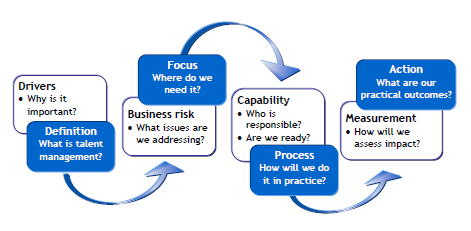Shaping talent management to address real business needs
1 Jan 2014
Wendy Hirsh, Principal Associate Fellow
 The latest IES research on talent management finds that we need to move from the habit of copying so-called 'best practice' in this area towards more of a 'best fit' approach. This is partly because a lot of widely promoted tools, like the nine-box grid, are quite confusing when you try to use them. It is also because the real talent gaps do vary from one business to another, and managers are at very different levels of sophistication in people management.
The latest IES research on talent management finds that we need to move from the habit of copying so-called 'best practice' in this area towards more of a 'best fit' approach. This is partly because a lot of widely promoted tools, like the nine-box grid, are quite confusing when you try to use them. It is also because the real talent gaps do vary from one business to another, and managers are at very different levels of sophistication in people management.
This research is based on investigations into talent management in 23 organisations across a range of sectors and explores this complex subject through a large number of real-life examples.
The report offers a very practical framework for addressing talent management, organised around a four-step model for setting your own priorities and adopting an approach to fit your business.
The Four-Step Approach to Talent Management
As shown in the summary diagram below, the four steps which need consideration in the development of a talent management approach are:
- Definition: What do we mean by talent management in this organisation?
- Focus: Which jobs and groups of people will talent management focus on?
- Process: How will talent management be done in practice?
- Action: What are the practical outcomes of talent management?

The report asks more detailed questions about the business context to help address each of these steps. We call these context-specific factors 'business moderators'. They concern the business drivers for talent management, the risks that the organisation hopes to address, the capability of managers implementing the processes and the measures which will be used to assess impact.
Key research findings
Although talent management has been a hot topic for quite a long time now, organisations are still at very varied stages in their journey to clarify their strategies and embed some practical activities. Some of the issues raised by the IES research included:
- Continuing difficulty with defining and then explaining what is meant by 'talent management'. A number of organisations had high-level messages about talent management developing the whole workforce but then really used the term to mean the development of those seen as having potential for the most senior roles. Getting the basic message clearer would help employees and managers a great deal.
- Growing interest in potential for senior specialist or professional roles and longer-term pipelines for occupations with scarce supply. Talent tools developed for senior leadership populations need considerable adjustment to work well for these professional groups.
- Experimentation with talent development - especially in combining blended learning programmes - to develop leadership skills, with individual support through coaching and mentoring and active career management to broaden experience.
- Embedding talent identification and development takes a number of years. It relies on managers having both the capability and motivation to take real responsibility for developing their best people. Those at the top need to role model this hands-on involvement.
- Measuring the impact of talent management is on the agenda, but tracking what happens to individuals identified as 'high potential' is not yet well embedded in most of the organisations in this study.
- HR support for talent management is often strong at the corporate centre, largely for the most senior populations. It is more difficult for busy HR Business Partners to support managers in this activity for the much larger populations lower down in the business, where talented people can be hidden or even blocked.
- Communication about talent management needs to be very accessible and practical. Some major organisations have been prioritising the clarification of their messages and tools.
As lead author, Victoria Campbell, summarised:
It is important to emphasise that the successful implementation of the talent management process requires both the support of top leadership and the engagement of the wider HR community, not just talent specialists.
Wendy Hirsh, co-author of the IES report, reflects further on reconnecting talent management with business needs in this year's IES Perspectives on HR report. Her article focuses specifically on the links between talent management and strategic workforce planning.
![]() Purchase Talent Management: A Four-Step Approach
Purchase Talent Management: A Four-Step Approach
If you have comments or queries on the research, or to find out how IES can help your own organisation with talent management, contact wendy.hirsh@employment-studies.co.uk


